The Controversial History Of The Banjo
by Dave Fox
History can be a hard thing to discuss, because, inevitably, you probably weren’t there to see the events unfold as they did.
This is especially true when we’re talking about the history of one particular musical instrument with a somewhat checkered past – the banjo.
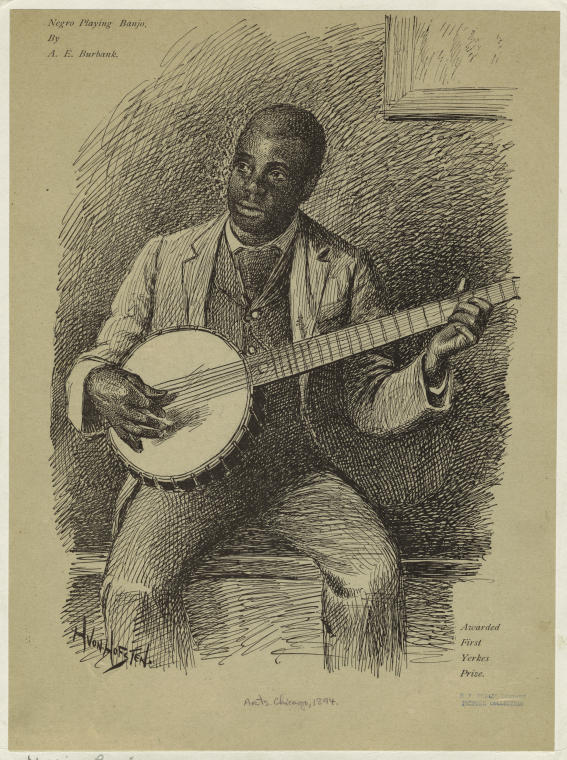
The banjo, as we know it, dates back 400 or so years to the Carribean in the 1600’s, when and where it was first documented.
By documented, I am referring to the only way anything way typically was documented centuries before now, and that is to say – in books, by way of either sketches or more detailed drawings, since cameras weren’t yet invented.
Sir Hans Sloane – First Documented Picture of a Banjo
For instance, here is an image taken from a travel journal from 1707 by Sir Hans Sloane, called “A Voyage to the Islands of Madera, Barbados, Nieves, S. Christophers and Jamaica”.
This shows the first documented image of what appears to be a banjo, or something like it, in the Carribean isles.
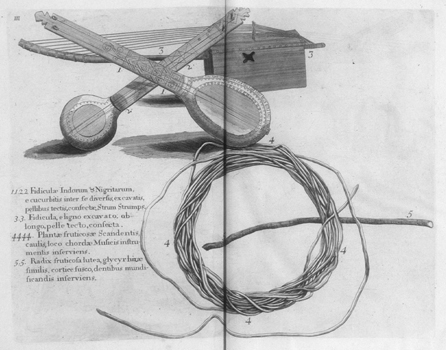
It should be noted that the book from which this picture was taken, was based on events that occurred in 1687, and then transcribed into book form in the 1700’s.
Sir Hans Sloane was a noted Irish physician, and his purpose in the Carribean was to assist the new Governor of Jamaica, the second Duke of Albemarle, as his personal physician.
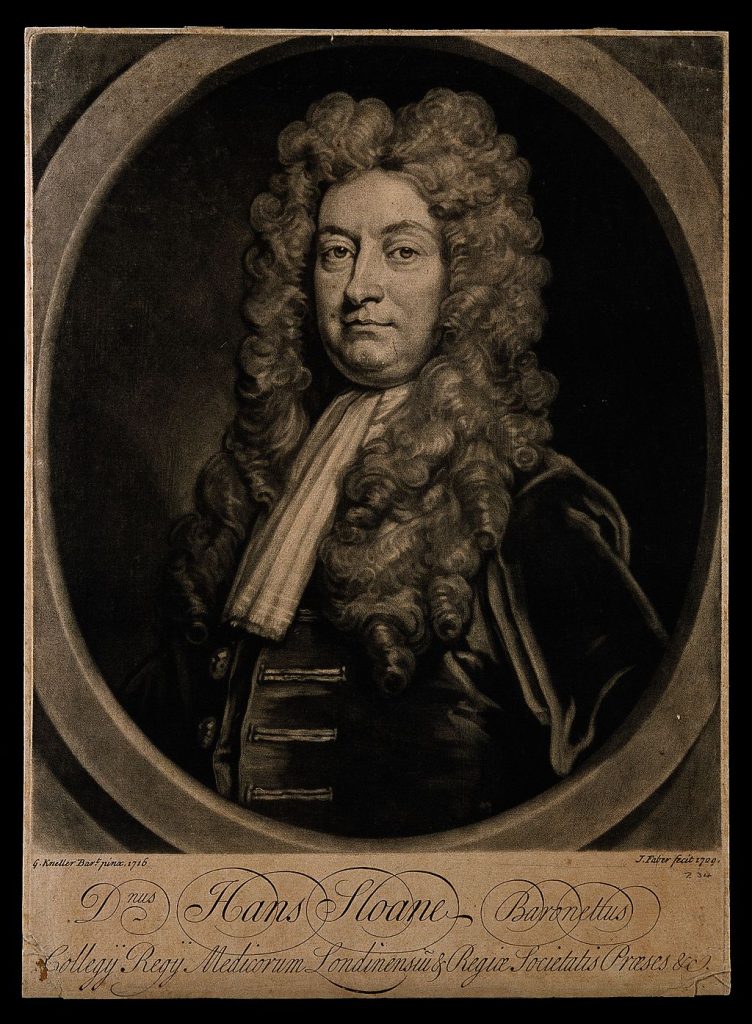
While visiting the islands, he collected plants for study and also documented other things. He also invented drinkable chocolate (chocolate milk), so you have him to thank for that, apparently.
As you can see from the drawings in his documents of the islands around Jamaica, these “banjos”, as it were, didn’t really resemble the banjos of today. This is because they weren’t, strictly speaking, banjos.
These instruments were, at the time of documentation by Hans Sloane, considered to be simply the instruments the peoples of the Carribean were playing at the time, and in the text you can see them referred to as “lutes”.
One of the defining characteristics of a banjo, which is present in the above example, is the drum-like body.
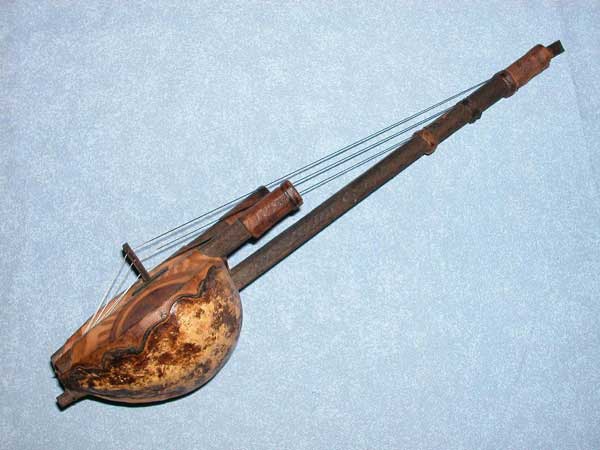
I should mention that, around this time in history (mid-1600’s), there were dozens of variations of stringed instruments that all appeared slightly different.
With the increasingly large migration patterns of people in 1600’s, it was certainly a difficult task to document what each was called, and what unique traits each one possessed.
Stringed instruments themselves date back 40 000 years, so it’s not as though stringed instruments themselves were new. Humans have been playing stringed instruments for thousands of years.
Plucked lutes, in particular, have been documented in Mesopotamia from around 6000 years ago.
Today the word banjo is loosely defined as: A stringed musical instrument (chordophone) with a round body, a membrane like soundboard and a fretted neck, played by plucking or strumming the strings.
The origin of the word “banjo” can be traced back to several places, including “banja” from Jamaica, “banza” from Brazil, and mbanza from Angola.
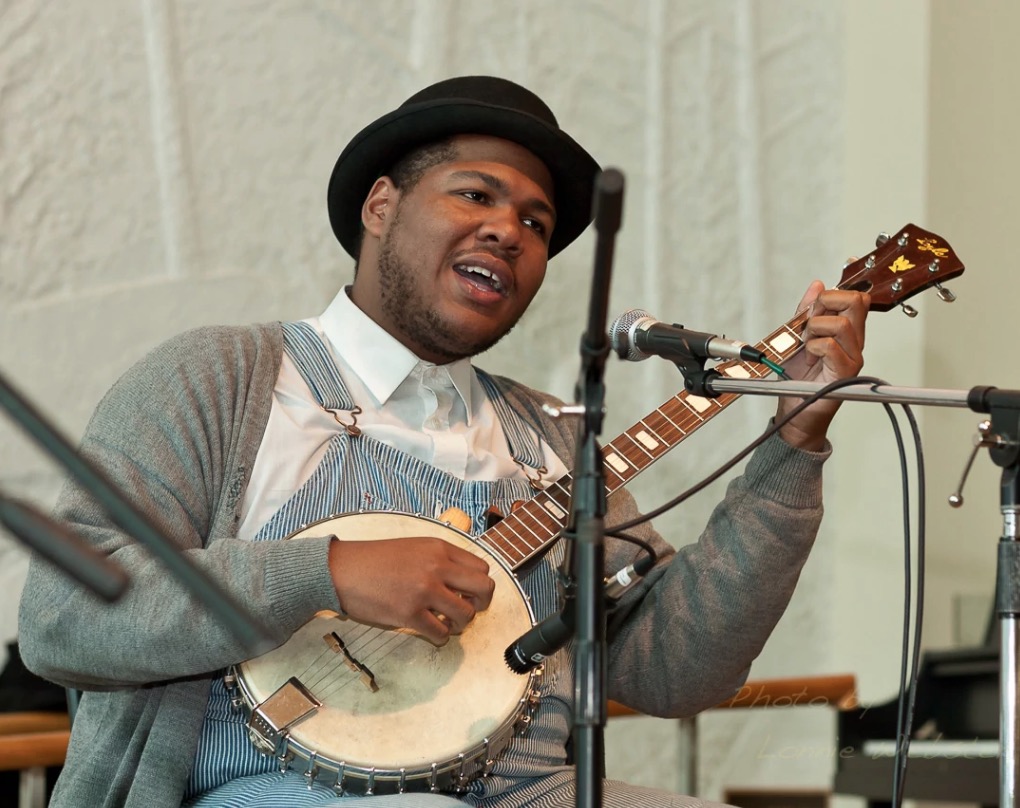
I’ve also seen the word “banjo”, used as a verb, meaning “to beat” or “to hit”. As in, “He banjoed that guy in the face.” This usage is, apparently, of British decent. I don’t believe it is commonly used nowadays, but only the Brits know this for sure.
Where Did The Banjo Instrument Originally Come From?
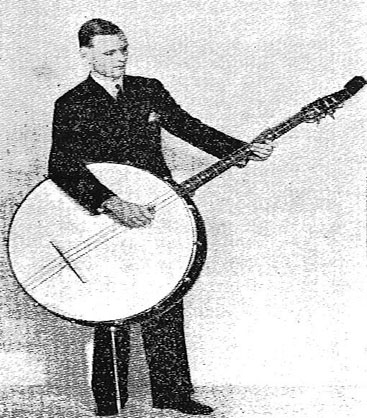
Although the first documented picture of what could be considered a banjo dates back to the 1600’s in the Carribean islands (ie.(the one at the top of this article), this doesn’t mean banjos were “invented” in the Carribean.
Again, if we define a banjo as a stringed instrument with several strings and a drum-like surface, we can trace its origins back even further, and to other continents.
There are many popular perceptions surrounding precisely where the banjo originated, and there are logical reasons for each of these presumptions.
For example, most people who live in North America don’t think first of the Carribean as the birthplace of the banjo. To some of us living in North America, suggesting that the banjo came from the Carribean doesn’t really sound accurate, and I think this is understandable.
The more dominant association that Westerners, I think, tend to recognize between the banjo and a particular geographic location, links the banjo, at least in the Westernized mind, to the southern United States.
This is a fair guess, as much of the lore, not to mention the majority of the popular media from the past 50 years, associates the banjo with styles of music that originated in the southern U.S., such as bluegrass, dixieland, and country music.
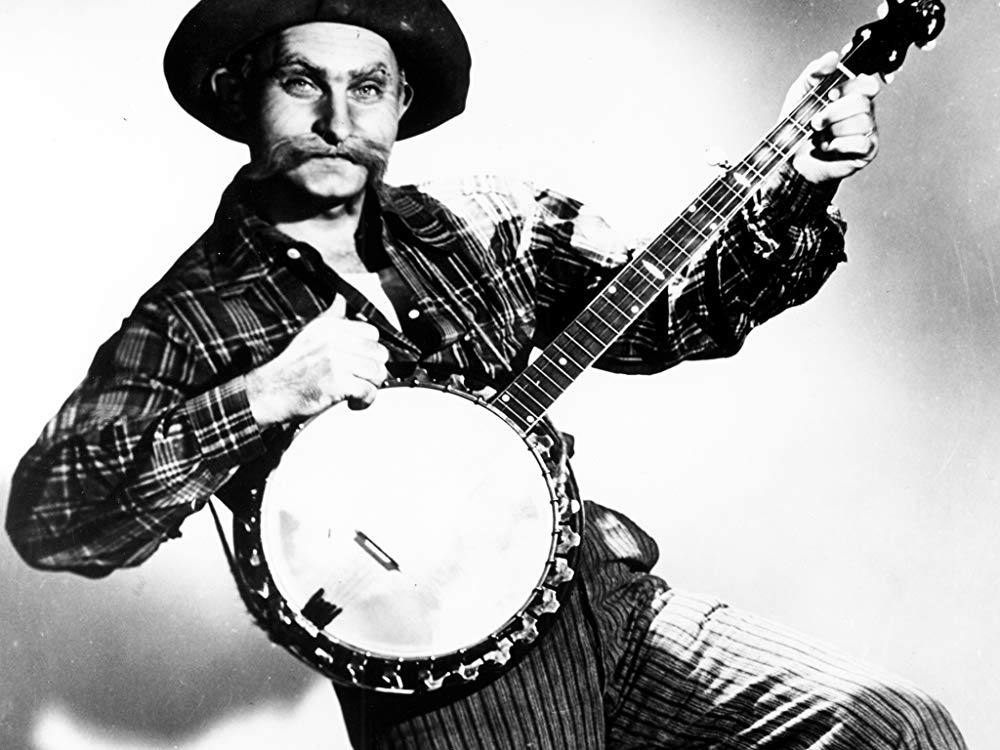
In addition, southern banjo players have been prominently been featured on various television shows and movies over the past 50 or so years, and that leads many of us to simply assume that banjo must come from the southern U.S., not the Carribean, as most research points to quite clearly.
Indeed, I’d say that there is a deep association between the instrument we call the “banjo” and states in the U.S. which are considered to be Appalachian.
Appalachian states include: West Virginia, Alabama, Georgia, Kentucky, Maryland, Mississippi, New York, North Carolina, Ohio, Pennsylvania, South Carolina, Tennessee, and Virginia.
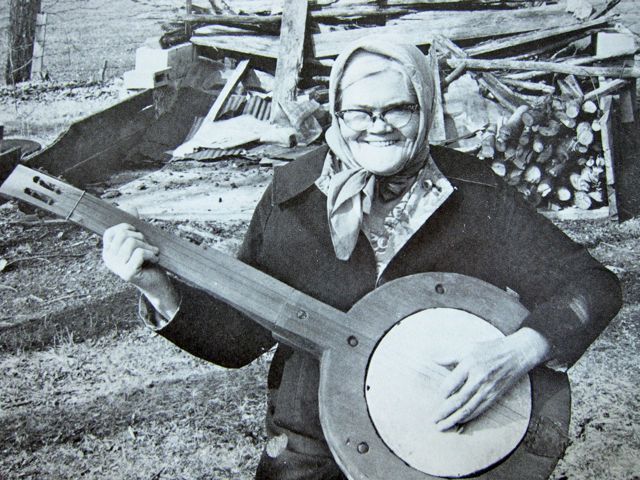
In turn, the history of Appalachian culture traces back to Scotland, Ireland, and Germany, when those peoples moved to North America and began living there in the 1800’s. And so, there are those who might guess that the banjo may have come from these countries, originally.
For example, it would seem fairly logical to think that the banjo may have come from Ireland, where the banjo is still popular today, when Irish peoples migrated into the mysterious and mountainous Appalachian rural regions, when the potato famine and general starvation prompted them to leave their homeland.
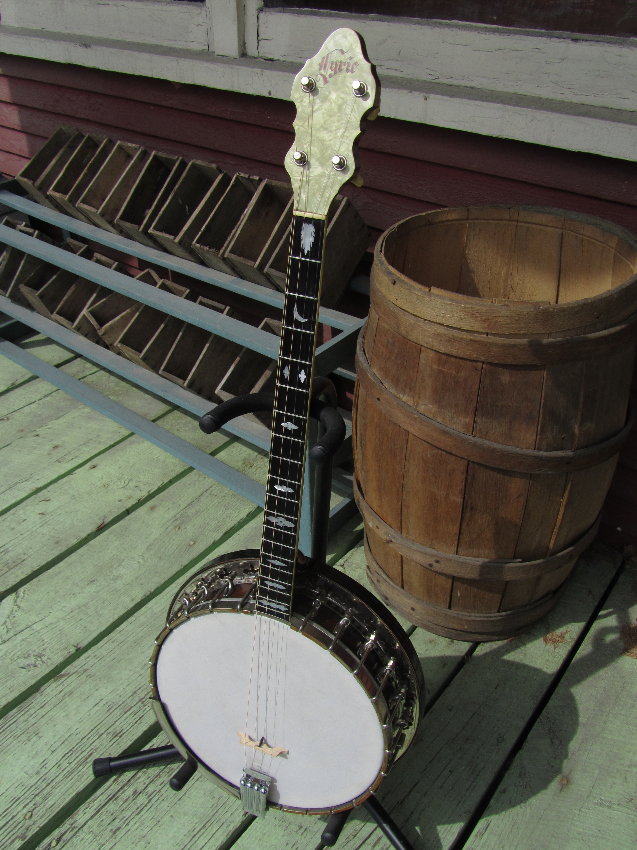
As many of us are aware, there are various stigmas attached to the idea of the someone who is from Appalachia, both good and bad, which I need not elaborate on here.
Suffice it to say, Appalachian peoples are considered to be of the land, and there is certainly a connotation that links banjo playing to a more rural type of folk.
In other words, an impoverished people, and this is fact is very much line with the reputation of previous peoples who played the banjo in past decades, where they were of a lower caste.
Here is that famous scene from the movie Deliverance, featuring the classic “dueling banjos” bit, although one “banjo” is clearly a guitar.
The interesting thing about the boy from Deliverance, Lonnie, who was presumably chosen for this unusual appearance (the book depicts an albino negro), is that he didn’t even know how to play the banjo, nor was he recruited from the backwoods of northern Georgia.
This next clip interviews the “boy” himself (now in his 50’s), played by Billy Redden, where he talks more about his role in the movie and his lack of skill on the instrument.
The clip also includes an interview with Ronny Cox (who played Drew Ballinger) talking about the cultural significance of the famous banjo scene, as being one of the defining movie moments of all time.
As more research is done about the history of the banjo, an interesting but rather dark narrative began to emerge from the gloaming of the past.
All that is needed to put this in perspective is a proper view of history and the slave trade in the 1600’s, which historians, by this point, have illustrated rather conclusively, to the point where any educated person would have trouble refuting it.
When it comes to the banjo’s true origins, all research points to it originating from Africa. Specifically, countries such as Senegal or The Gambia (ie. Senegambia), which were the focus of the slave trade.

The original picture which I shared at the beginning of this article, from 1707, shows a version of the banjo that does not yet appear in its modern form.
Banjos made from gourds
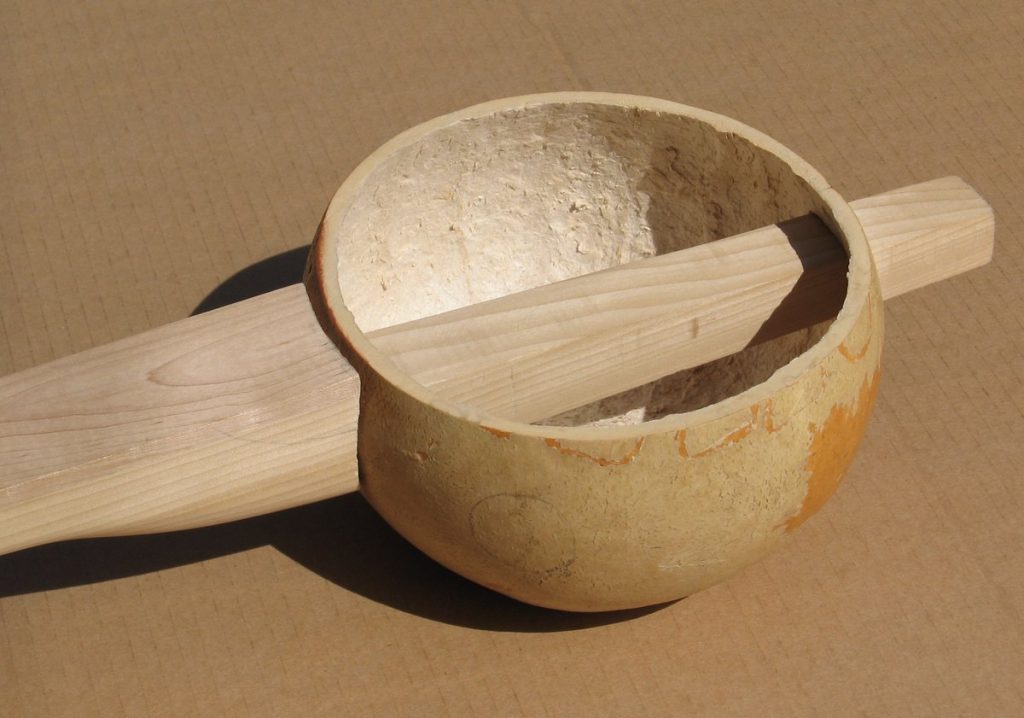
When the banjo was beginning to catch on in the Carribean, it still showed some evidence of its past where it was fashioned sometimes out of gourds, serving as a shell for the body. This was then attached to its characteristic long neck, and strings were added.
Before banjos took on the appearance we know them to have today, with a circular body shaped that almost looks like a snare drum, their precursors from Africa were often made from different materials than were available in the Americas in later centuries.
Here is a reproduction of a colonial era banjo made with a gourd for a body. As you can see, this has influences of a style of instrument popular in Africa over the centuries. At the same time, you can see how this instrument below does have characteristics of the modern banjo.
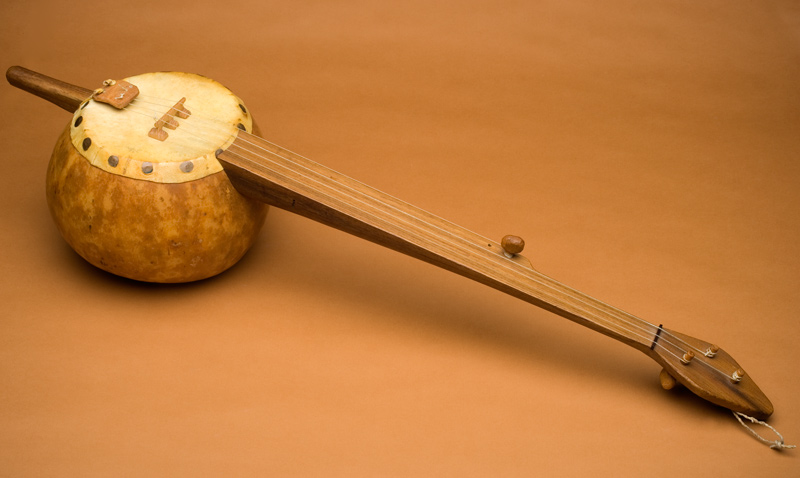
Next, we have an image of a banjo that seems to bridge the gap, between a banjo body made out of a gourd, and one that more resembles a wider circular drum.
Even though it still has a primitive look, like it wasn’t “professionally” built, this banjo begins to take on a more “modern” shape.
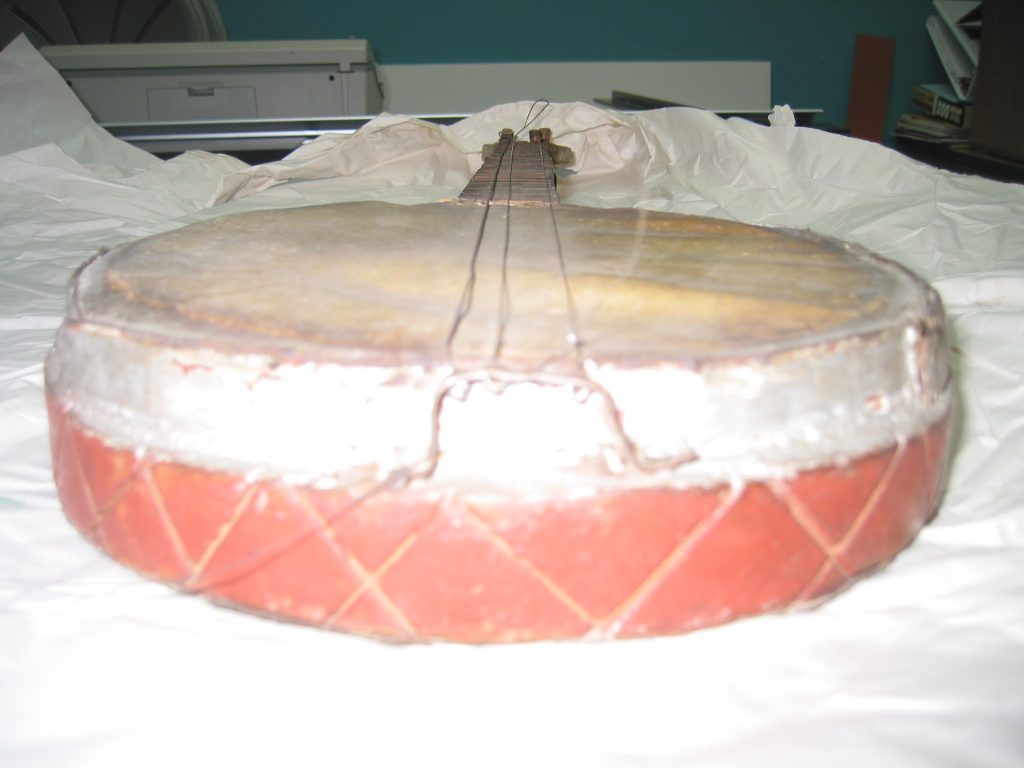
The image most of us conjure up when someone says the word “banjo”, was not yet in existence in 1707, and wouldn’t be for at least 100 years.
Here is an old banjo from the 1900’s. By this time, banjos were fully Americanized, one might say. It has the modern fretboard, the modern tuning pegs, and the unmistakable body and neck shape.
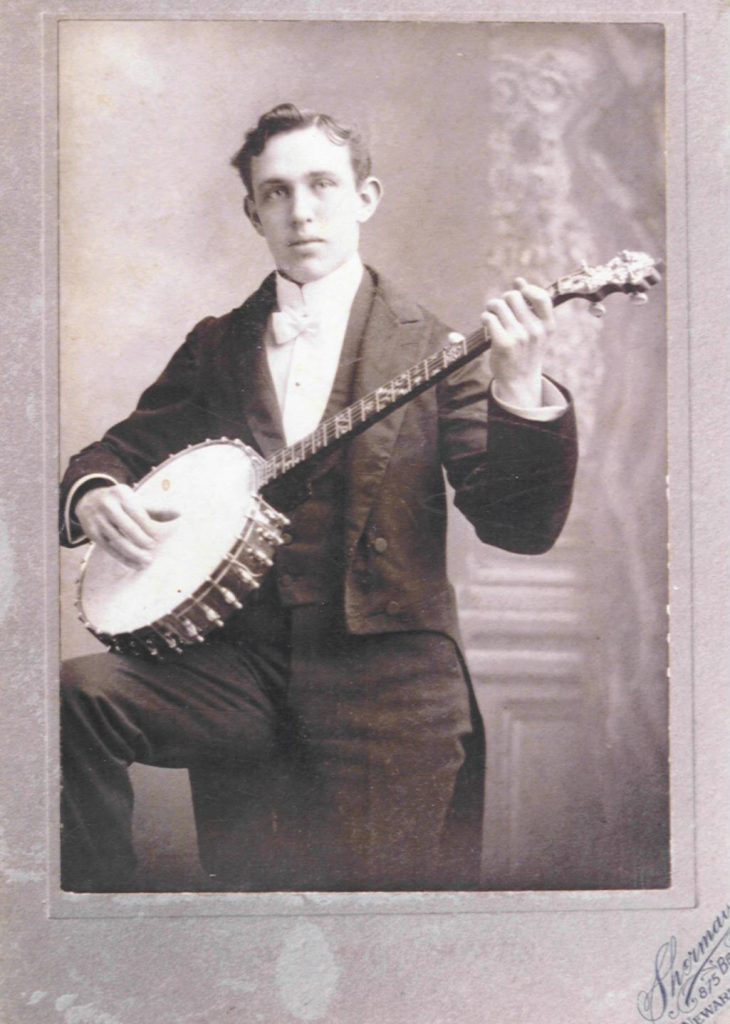
To reach its modern form, history would have to wait until the late, great, and controversial Joel Sweeney came along in the 1830’s and “invented” it, or so it has been said.
Joel Sweeney, “Inventor” of the 5-String Banjo
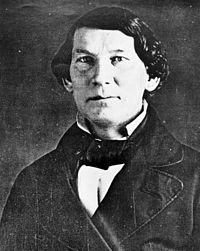
Joel Walker Sweeney was a popular minstrel performer from the first half of the 19th century hailing from Virginia, who was perhaps the first popular white man to famously play the instrument. At the same time, he was said to have been taught by African Americans, which is partly why he could play so good.
Joel Sweeney has been credited with raising the profile of the banjo from an instrument associated with the unwashed masses, and bring it up to a level of sophistication which could be eventually be accepted, and then firmly embraced by the middle class.
Claiming that Joel Sweeney somehow single handedly raised the stature of banjo playing on a global level is almost too ludicrous to say, but it may in fact ultimately be true.
The reason the claim is contentious, is because Joel Sweeney was not just a talented performer who ended up making the banjo more famous because of his adept abilities on the instrument. He certainly was that, but that was only part of how Joel Sweeney shined the spotlight on the banjo, and “brought it” to the higher societal castes, as it were.
Here is a book on Joel Walker Sweeney, if you are interested in getting the full story on the man and what he did for the banjo.
It is more accurate to say, I think, that Joel Sweeney was a multi-talented circus performer who, according to rumour, played the instrument with his feet, while fiddlin’ with his hands, and then playing mouth harp all at the same time, when the mood hit him.
He was also highly skilled at imitating animals, as one of his primary talents for which he was known. Basically, the guy was just a son of a gun who was, by all accounts, very entertaining to everyone who happened to catch his performances.
His influence spread as he and his troupe toured America, as well as Europe, and even played for Queen Victoria in 1843. He then went on and played and showed off his formidable banjo playing skills with his brothers, called Old Joe’s Minstrels.
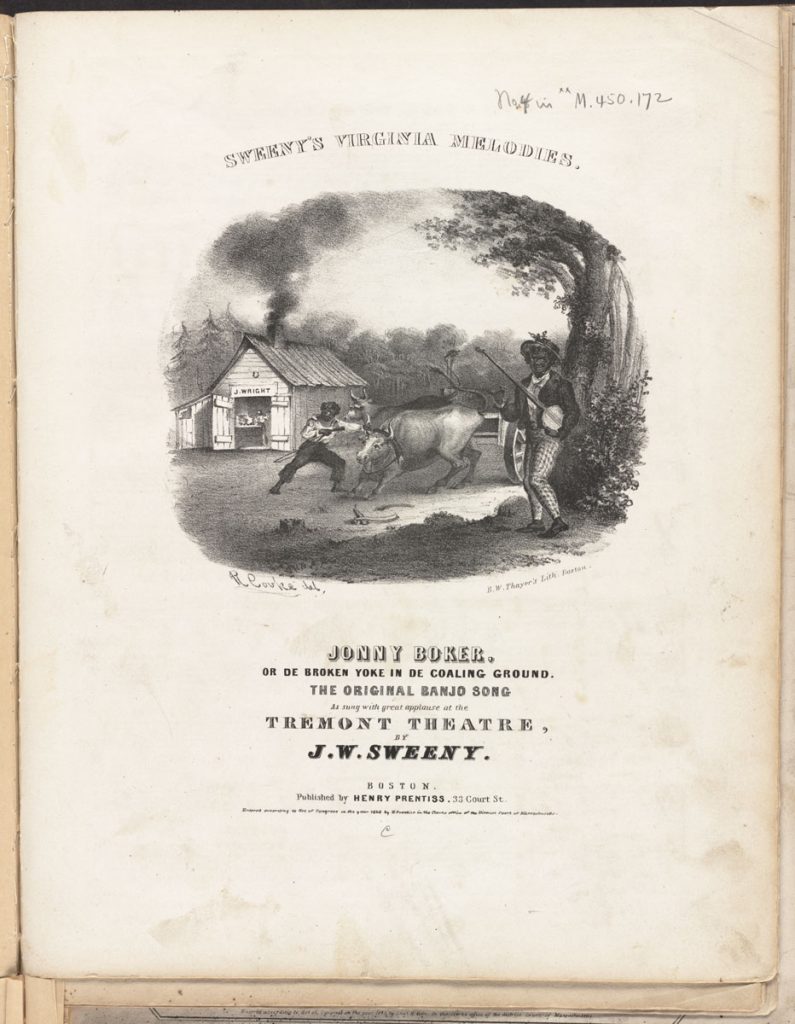
Joel Sweeney’s influence on the popularity of the banjo cannot be underestimated.
The controversy, which occurs more in retrospect than it did at the time it happened, comes now from the fact that Joel was a blackface performer, a practice which is now practically forbidden in Western society today.
To be specific, blackface is the theatrical practice where non-black performers painted themselves up to look “black” with greasepaint, burnt cork, or shoe polish.
The last time we saw people performing in blackface wasn’t all that long ago. One more recent instance was The Black and White Minstrel Show from 1978.
Consider this – slavery didn’t end until 1865, with the introduction of the 13th Amendment, which declares: “Neither slavery nor involuntary servitude, except as a punishment for crime whereof the party shall have been duly convicted, shall exist within the United States, or any place subject to their jurisdiction.”
Of course, it is not difficult to see the connection between the racial stereotypes that blackface seemed to promote, and the mistreatment of blacks through the centuries. In fact, the idea of the old style minstrel show, complete with blackface, is a quick reminder to many people, to this day, of the existence of slavery, and various caricatures of black culture.
Of course, where you had minstrel shows in the 17th century, onward, you had blackface, and so then you had banjos. Banjos, the instrument which was beginning to see acceptance worldwide, and detaching itself from various prejudices of the times, was still very much embroiled in what I can only call “racism”.
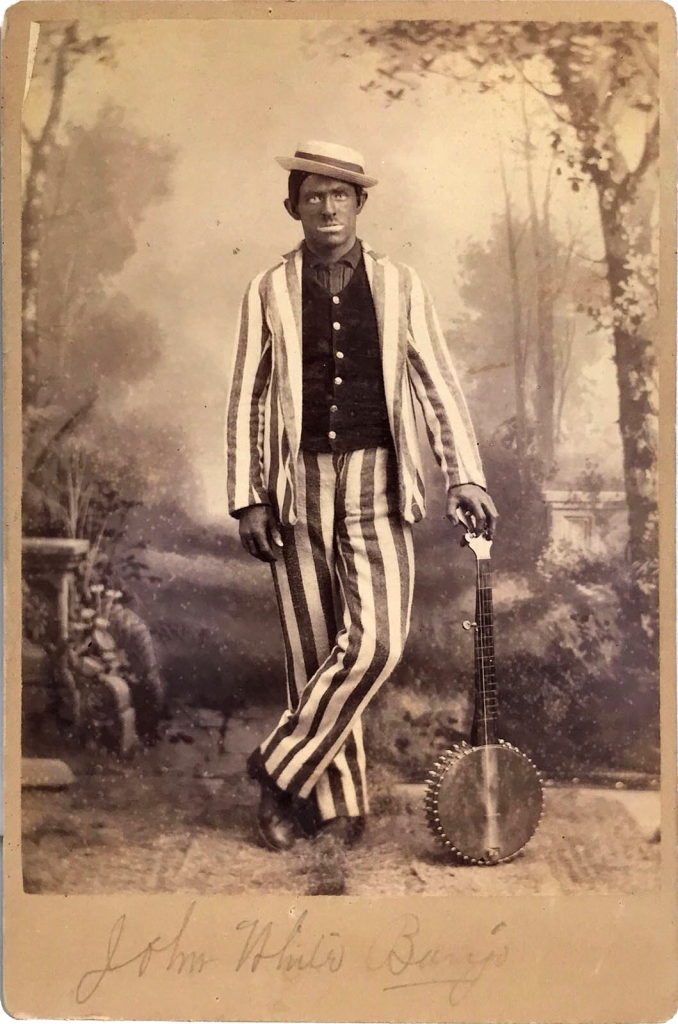
It is understood that, in the context of the times, minstrel shows were quite normal. Then again, so was slavery.
Perhaps the most famous blackface performer people know today is Al Jolson, who was the highest paid entertainer back in the 1920’s and was, at the time, proclaimed “The World’s Greatest Entertainer” at one time.
Al Jolson, although he didn’t play the banjo himself, helped popularize one of the most well known banjo songs ever – Oh Susanna.
To me, this song represents, in large part, why the banjo is thought to come from the southern U.S., as the lyrics reflect this, and the song is maybe the best known banjo tune of all time.
As you can see above, Al Jolson used blackface makeup, which he often did.
This practice of blackface dated back to, reportedly, the 1400’s, but had become very popular in colonial America at the time in the 1800’s. There are many pictures of blackface performers holding or playing banjos.
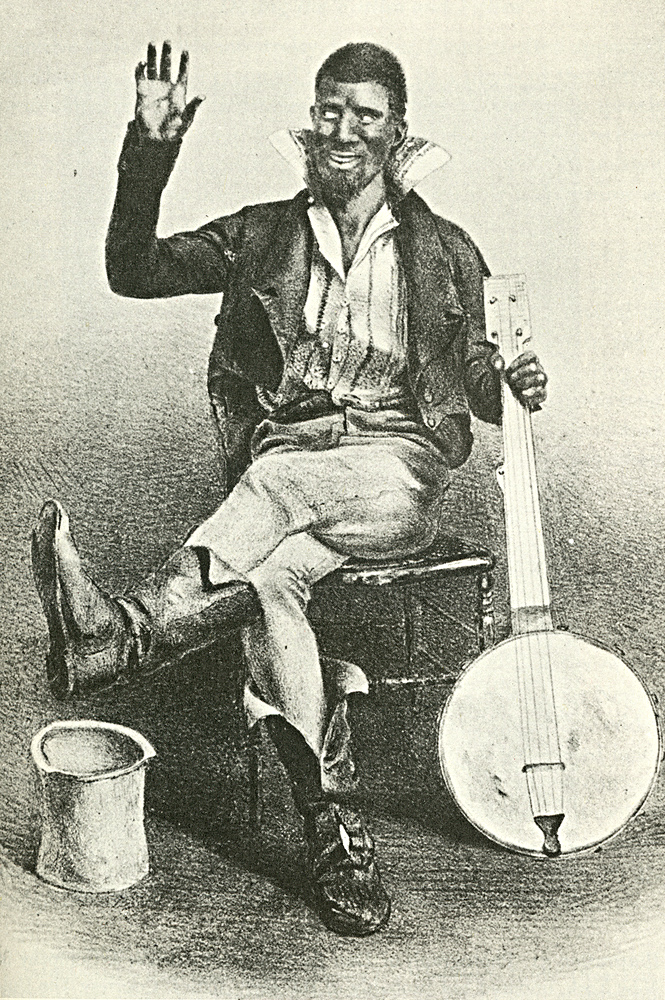
The association between minstrels wearing blackface makeup and the banjo itself is a strong one, but I don’t say this to indict the banjo as being part of the history of racism, even though it essentially is a part of that history. That said, you can’t really “blame” an instrument for anything, can you?
Of course, there’s no denying that the banjo probably wouldn’t have made it to the Carribean, to be used by slaves in the Americas, had it not been brought across the seas along with the thousands of slaves who played similar instruments, and who were sold to slavers at the time, in the 1600’s, when the trade was in full swing.
It is worth mentioning that at this time, the banjo was not called a “banjo.” I mentioned some of the other names of the banjo that were used previously, but, back in 1687, when Sir Hans Sloane was travelling in the Carribean, writing his now-famous journals, he referred to the instrument as the “strum strump”. Nice name!
Akonting
In these African communities in Senegambia, from which slaves were being captured and brought to the Americas by the thousands, there was (and still is) an instrument known as the akonting, which is said to be the precursor to the modern banjo.
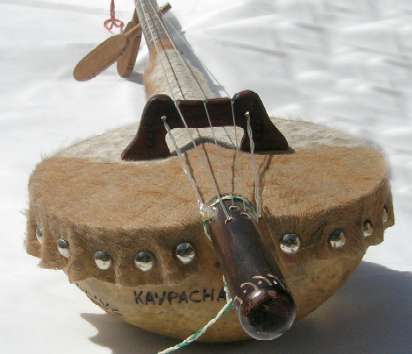
Other African instruments said to be precursors of the banjo include the ngoni and xalam, but for now I’ll focus on the akonting, a hide-covered instrument said to be the most similar to the banjo.
The akonting (also known as the ekonting to the Jola tribes who first created them) is a strummed folk lute style of instrument which is similar to a banjo, traditionally made with a gourd for a body, along with two strings for melody, plus one drone string played with the thumb. This makes the akonting similar to a 5-string banjo.
The akonting can be traced back to the village of Kanjanka, Senegal. It can be tuned in different ways, similar to a 5-string banjo, and its tuning, called kanjanka, equates to kan (5th note of a scale), jan (root note of a scale), and ka (the flatted 7th), or 5/1/-7.
Here is a picture of a Jola village, the originators of the akonting / ekonting instrument.
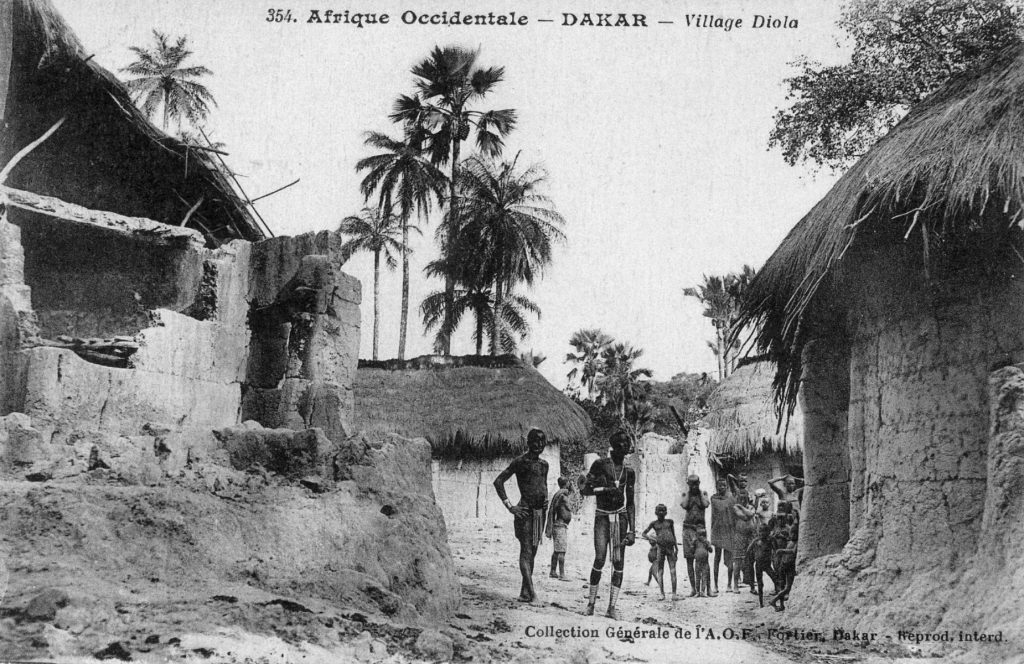
Up next, we have a man named Daniel Jatta, playing a tune written by his father on the akonting in the traditional style.
The downstroke style here, called “o’teck” or “to strike”, is very similar in style to the very first banjo styles in the Americas, the “stroke style”, which was a precursor to the clawhammer or frailing style.
While all of this seems very plausible, that the akonting was brought over to the Americas by slaves, and that is the instrument upon which the modern banjo was based, there is still some controversy around this topic, making it unclear at which point exactly what happened during those harrowing years when the slaves were brought to the Americas.
Banjos on the Plantations
By 1807, there were over 3 million African slaves in the Americas, where they harvested crops like tobacco, sugar, and cotton.
Once the slaves were living in the Americas, they lived on the plantations, worked, and, above all else, suffered. For a more detailed history of what this was like, go here.
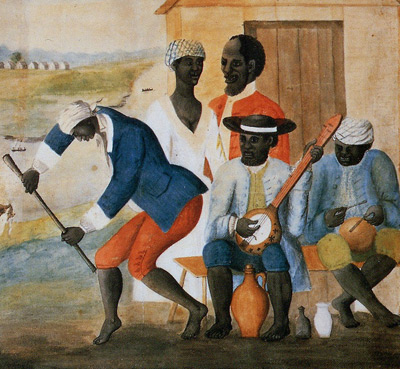
As much as the African slaves suffered, their music never left them, and they looked for opportunities to express it, as anyone would.
Although they basically were brought here with nothing, the African slaves were eventually able to have some small respite from their masters, at first through the singing of gospel music, which is something that was impossible to take from them completely and helped them cope.
Then, if they were able, they would produce the occasional musical instrument that they were able to build by hand.
This is where their memories of their favourite native African instruments came back to them, and they were able to make these banjo-esque instruments, in order to accompany their singing, and put voice to their struggle.
That is, if their cruel slave masters allowed it. Some plantation owners certainly did not accommodate their wishes, regardless of how modest they were.
Here is a recent “lynching memorial” erected in Montgomery, Alabama.
William Boucher
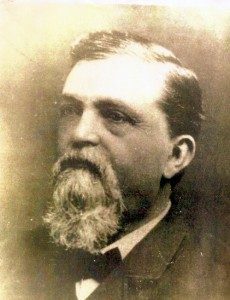
In the midst of the tumult that was America in the 1800’s, due to slavery, wars, and other factors, a Baltimore man named William Boucher was busy building instruments, including drums and minstrel banjos. He was the first ever commercial maker of banjos in the U.S.A.
Here is a video which shows a replica of a Boucher banjo being played. Not surprisingly, there’s a little Oh Susanna thrown in for good measure.
You can still purchase original builds of these banjos, although they will can cost upwards of $10 000 nowadays.
Conclusion
While there is plenty more to say about the development of the banjo up through the years, I think it’s alright to stop here.
As we know, the banjo went on to become an instrument that is a major part of the broader musical landscape around the world.
Despite its confusing and controversial history, I can say that in 2018, if a young person wants to learn the banjo, they can do so without having to ponder all of the heavier historical baggage that comes along with it and just enjoy the music.
That said, sweeping history under the rug is never a wise thing to do, especially when we know some of the facts.
 |
 |
 |
 |

About Dave Fox
Recorder of many songs, haver of many albums. Dave (AKA Young Coconut) has been making music for the past twenty years or so, of varying genres and degrees of quality, to the dismay of listeners and algorithms everywhere. He’s also in the Suburban Bicycle Gang with Jerry Grey.
Dave has a keen interest in studying all aspects of music history, especially experimental / genres like jazz, krautrock, drum n’ bass, and no wave.
Here’s his Spotify: https://open.spotify.com/artist/1v3iPVEXzurahTI2Tm4Tpm
Leave a Reply
Check for FREE Gifts. Or latest free acoustic guitars from our shop.
Remove Ad block to reveal all the rewards. Once done, hit a button below
 |
 |
 |
 |
